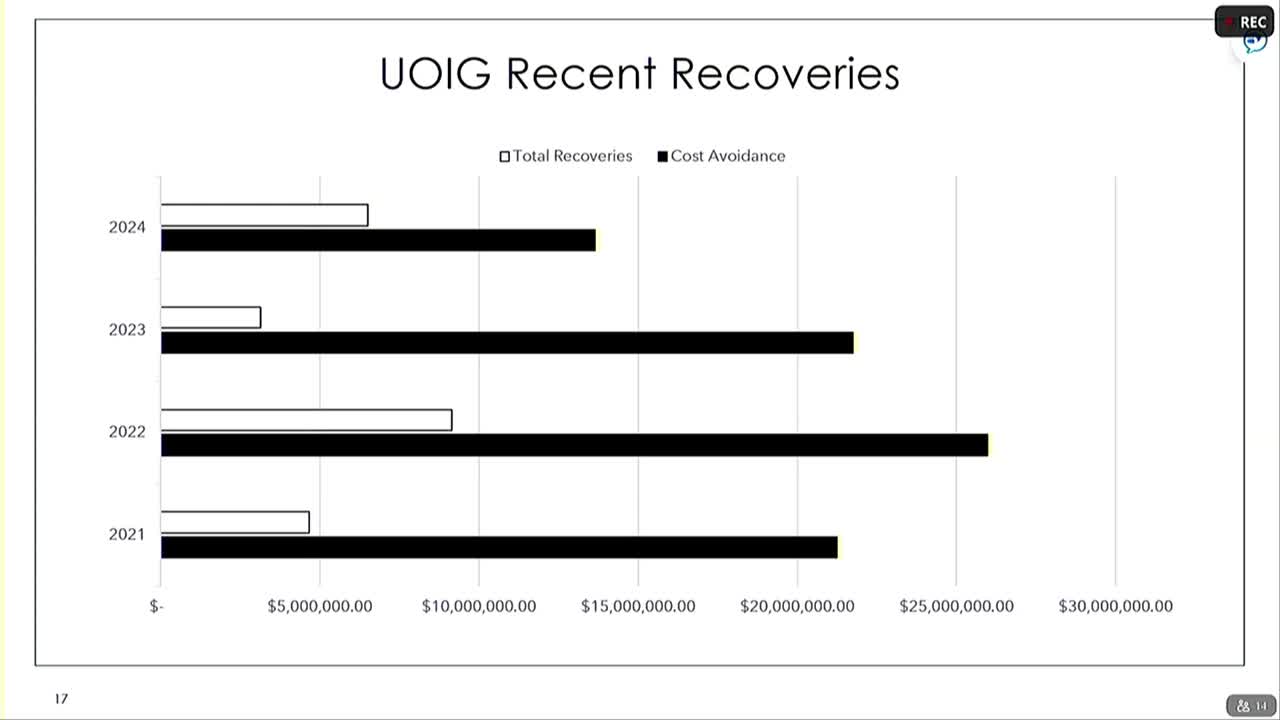SITLA reports $142 million in FY25 revenue; trustees say portfolio supports perpetual school trust
October 27, 2025 | 2025 Utah Legislature, Utah Legislature, Utah Legislative Branch, Utah
This article was created by AI summarizing key points discussed. AI makes mistakes, so for full details and context, please refer to the video of the full meeting. Please report any errors so we can fix them. Report an error »

Michelle McConkie, executive director of the School and Institutional Trust Lands Administration (SITLA), briefed the Retirement and Independent Entities Committee on Oct. 25 on trust-land management, revenue and portfolio strategy.
McConkie said SITLA manages about 3.3 million acres of surface estate and about 4.5 million acres of mineral estate, and administers roughly 10,000 individual parcels and more than 6,000 active contracts. She reported that fiscal year 2025 revenue for trust lands was about $142.1 million. Revenue breakdown McConkie provided for FY25: real estate and development about $64.7 million, energy and minerals about $58.2 million, surface resources (grazing, timber and similar receipts) about $19.2 million.
McConkie described SITLA's mission as managing trust lands to maximize long-term value for beneficiaries. She explained that trust lands were granted by the federal Enabling Act of 1896 to benefit specified beneficiaries (public schools account for roughly 96% of trust allotments). Revenue goes into a permanent fund invested by the state's investment office (SITFO); a percentage of investment returns is distributed annually to beneficiaries. McConkie noted a recent constitutional amendment that raised a distribution cap from 4% to 5% and said the FY26 distribution to beneficiaries is projected at about $143.4 million, of which approximately $133.5 million will go to public schools.
Committee members asked about land within city limits, overhead and the agency's strategic mapping and portfolio-evaluation work. Representative Peterson asked whether the $142.1 million figure was gross revenue; McConkie confirmed that number is overall revenue and offered to provide the office's exact operating budget figure (she said she believed it to be approximately $10 million). Representative Thurston asked about the land-management philosophy for balancing sale versus sustained use. McConkie said SITLA makes most revenue through leases and development partnerships and sells limited parcels after market value is increased, citing master-planned developments in Washington County as examples. The agency said it is testing attainable-housing projects and refining GIS-based portfolio information to guide planning.
No committee action was taken on the presentation; committee members praised SITLA's returns and work and said they would receive follow-up materials on specific operating-cost figures and the portfolio evaluation work.
McConkie said SITLA manages about 3.3 million acres of surface estate and about 4.5 million acres of mineral estate, and administers roughly 10,000 individual parcels and more than 6,000 active contracts. She reported that fiscal year 2025 revenue for trust lands was about $142.1 million. Revenue breakdown McConkie provided for FY25: real estate and development about $64.7 million, energy and minerals about $58.2 million, surface resources (grazing, timber and similar receipts) about $19.2 million.
McConkie described SITLA's mission as managing trust lands to maximize long-term value for beneficiaries. She explained that trust lands were granted by the federal Enabling Act of 1896 to benefit specified beneficiaries (public schools account for roughly 96% of trust allotments). Revenue goes into a permanent fund invested by the state's investment office (SITFO); a percentage of investment returns is distributed annually to beneficiaries. McConkie noted a recent constitutional amendment that raised a distribution cap from 4% to 5% and said the FY26 distribution to beneficiaries is projected at about $143.4 million, of which approximately $133.5 million will go to public schools.
Committee members asked about land within city limits, overhead and the agency's strategic mapping and portfolio-evaluation work. Representative Peterson asked whether the $142.1 million figure was gross revenue; McConkie confirmed that number is overall revenue and offered to provide the office's exact operating budget figure (she said she believed it to be approximately $10 million). Representative Thurston asked about the land-management philosophy for balancing sale versus sustained use. McConkie said SITLA makes most revenue through leases and development partnerships and sells limited parcels after market value is increased, citing master-planned developments in Washington County as examples. The agency said it is testing attainable-housing projects and refining GIS-based portfolio information to guide planning.
No committee action was taken on the presentation; committee members praised SITLA's returns and work and said they would receive follow-up materials on specific operating-cost figures and the portfolio evaluation work.
View the Full Meeting & All Its Details
This article offers just a summary. Unlock complete video, transcripts, and insights as a Founder Member.
✓
Watch full, unedited meeting videos
✓
Search every word spoken in unlimited transcripts
✓
AI summaries & real-time alerts (all government levels)
✓
Permanent access to expanding government content
30-day money-back guarantee


